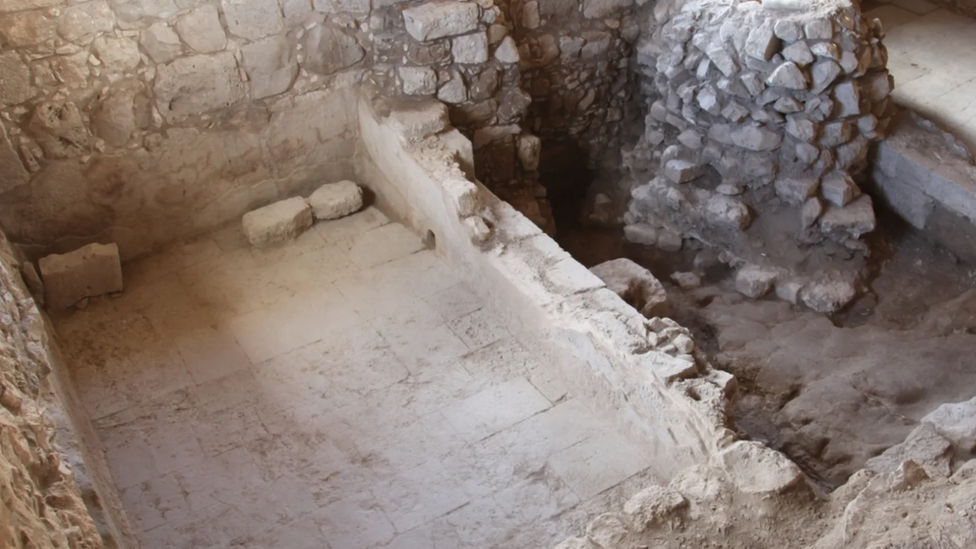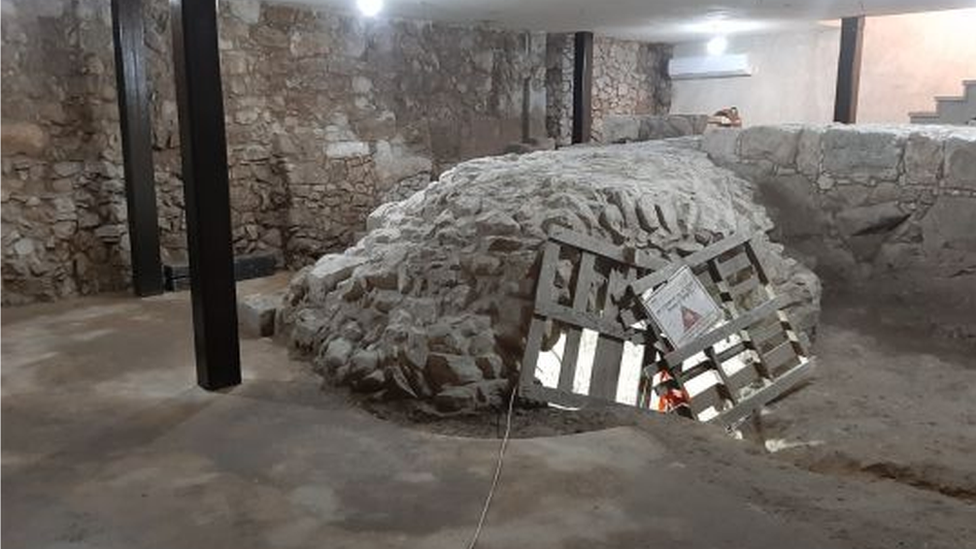Crusader winery found under house in Israel
- Published

The winery is unusual in having two treading floors
A huge winery dating back to the Crusades has been found under a house in Mi'ilya in northern Israel.
The townspeople have been working together to shore up the ruins of the 12th century King's Castle, external that dominates their Galilee skyline under the guidance of local archaeologist Rabei Khamisy, the Haaretz newspaper reports.
But a businesswoman who runs a filling station in the popular tourist destination asked for a parallel dig under her own property, and that's where Dr Khamisy uncovered what could be the largest wine factory the Crusaders ever built during their presence in the Levant.
"The Byzantines had much larger wineries, but the Crusaders had nothing comparable as far as we know," he told Haaretz.
'Treading floors'
What makes the winery even more remarkable for its time is the fact that it has not one but two treading floors for crushing grapes, laid in parallel and apparently draining into a huge pit that was carved out of the rock below in the Roman period.
Archaeologists think Baldwin III, a Crusader King of Jerusalem, built the castle in about 1150 as a strategic defensive fortress and an administrative centre for the extensive local lordship.

The poor state of the castle ruins prompted the excavations
The people of Mi'ilya, one of only two Christian towns in Israel that profess the Greek Melkite faith, have lived in the shadow of the castle ever since, but crumbling masonry has started to pose a threat to inhabitants and visitors alike in recent years.
As the local council had done little more than close off some roads, Dr Khamisy and the townspeople raised enough money to restore parts of the castle themselves under the aegis of the Zinman Institute of Archaeology, external at the University of Haifa, where the archaeologist teaches - at which point the council gave its support to the project.
You may also be interested in:
At the same time, businesswoman Salma Assaf paid for the dig to explore beneath her Ottoman-era house, where they had to remove large amounts of debris before uncovering the wine factory.
"I wanted to know what was underneath my home," she told Haaretz, and the public can soon see the results of this work.
Mrs Assaf is opening a culinary and tourist centre called Chateau du Roi, in honour of the King's Castle, above the winery, complete with a glass-panelled floor for the benefit of the diners and direct access to the excavation for those who want to admire it close up.
But this is far from the end of the exploration of Mi'ilya's past. Dr Khamisy and Mrs Assaf plan to open a museum to showcase artifacts dating back millennia to the Neolithic era - as well as a shop to sell local wine produced by more modern methods.

Mamluk rulers of the region later covered the Roman-era pit with a vaulted roof
Reporting by Martin Morgan
Next story: Unfinished road in Russia is 'drive through hell'
Use #NewsfromElsewhere to stay up-to-date with our reports via Twitter, external.